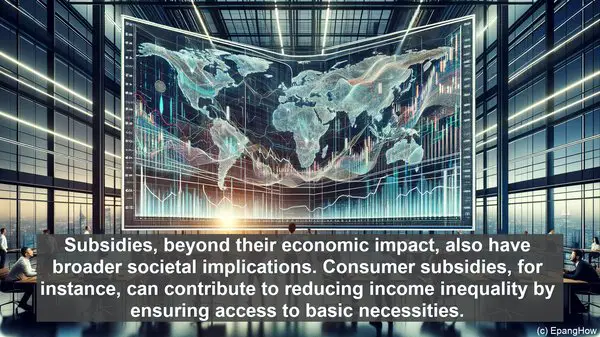Introduction: Unraveling the Subsidy Conundrum
Hello, everyone! Subsidies are a topic that often sparks debates and discussions. Today, we’re going to dissect the two primary types of subsidies: producer subsidies and consumer subsidies. While they might seem similar on the surface, they have distinct purposes and consequences. So, let’s dive in!
Producer Subsidies: Fostering Production and Competitiveness
Producer subsidies, as the name suggests, are financial aids provided by the government to producers or suppliers of goods and services. These subsidies are primarily aimed at reducing the production costs, thus making the products more affordable for consumers. By doing so, they not only encourage domestic production but also enhance the competitiveness of local industries in the global market.

Consumer Subsidies: Making Essential Goods Accessible
On the other hand, consumer subsidies are designed to directly benefit the end-users or consumers. These subsidies are typically targeted at essential goods and services, such as food, healthcare, or education. By reducing the prices of these necessities, consumer subsidies ensure that they remain affordable and accessible to a wider population, especially those with lower incomes.
Economic Impact: Balancing the Scales
Both producer and consumer subsidies have their economic implications. Producer subsidies, by reducing production costs, can lead to increased supply and potentially lower market prices. This, in turn, can stimulate demand and overall economic growth. Consumer subsidies, by making essential goods affordable, can enhance the purchasing power of individuals, thus driving consumption and economic activity. However, it’s crucial to strike a balance, as excessive subsidies can strain the government’s finances and create market distortions.

Societal Implications: Beyond the Economy
Subsidies, beyond their economic impact, also have broader societal implications. Consumer subsidies, for instance, can contribute to reducing income inequality by ensuring access to basic necessities. They can also improve social welfare and standards of living. Producer subsidies, on the other hand, can foster job creation and support specific industries, thereby promoting regional development. However, it’s essential to regularly evaluate the effectiveness of subsidies to ensure they are achieving their intended goals.
